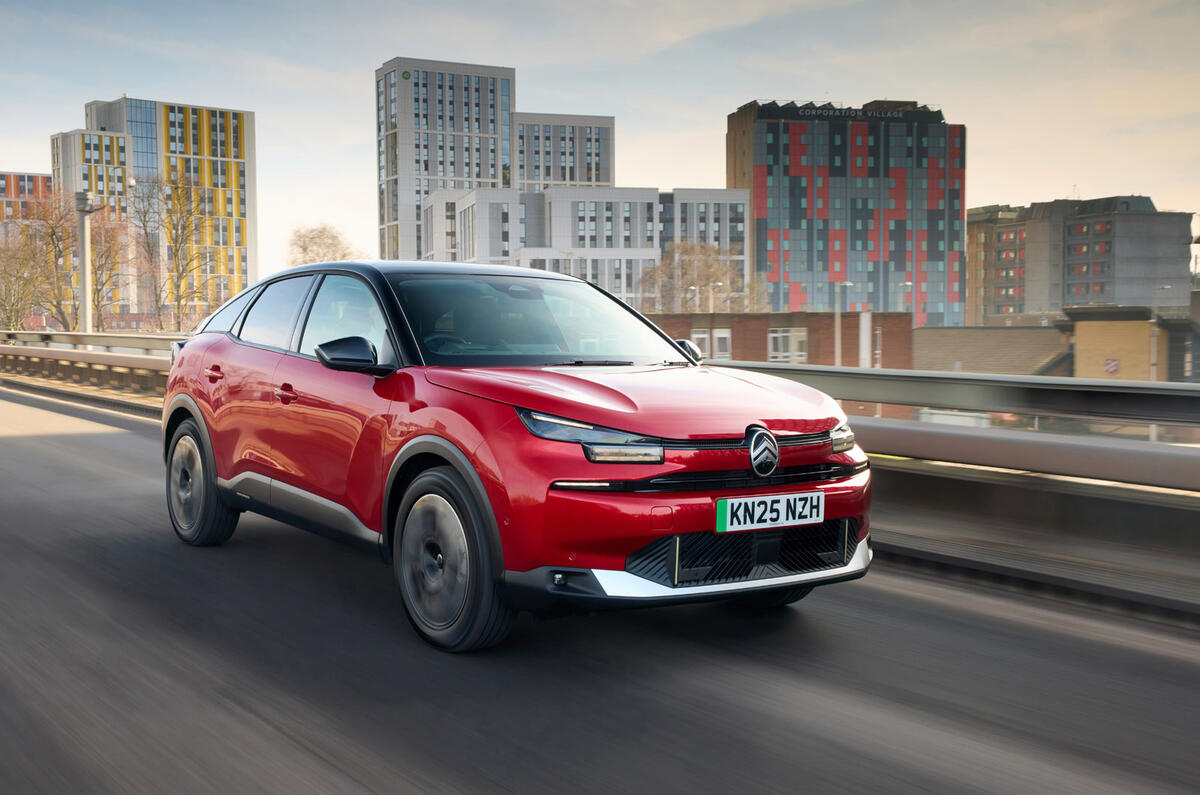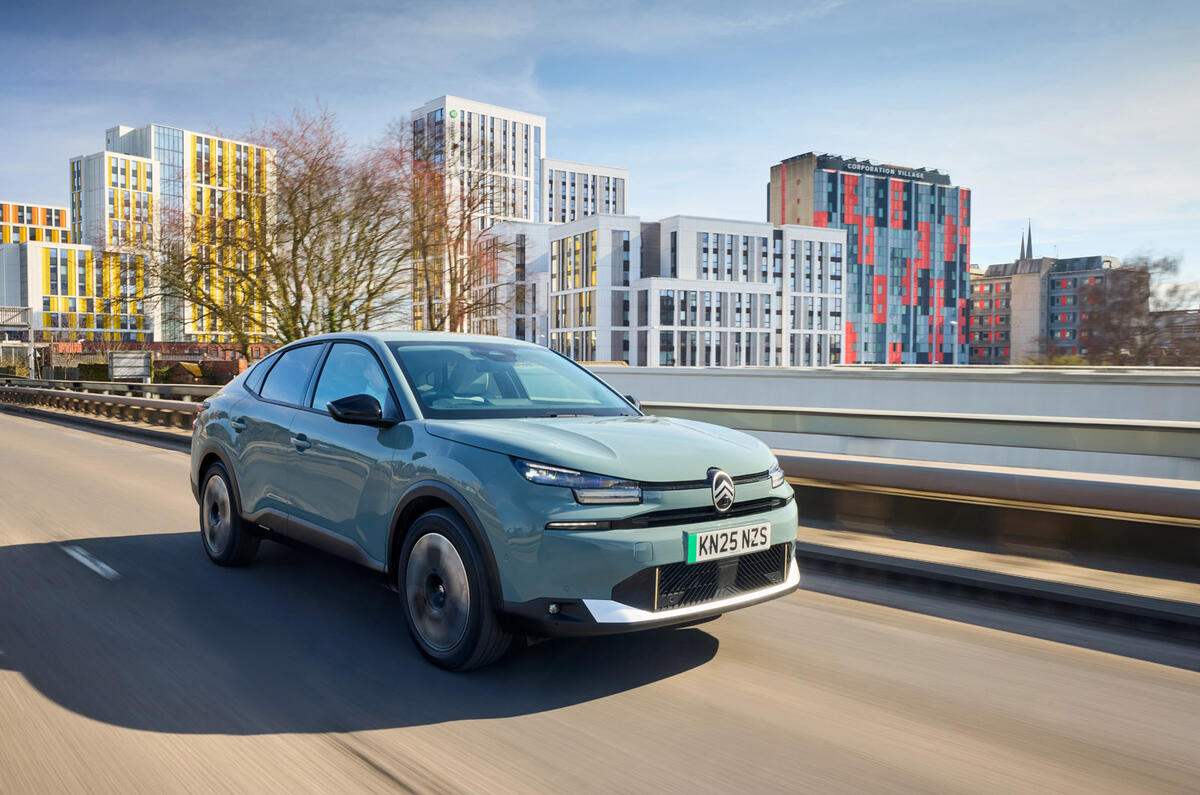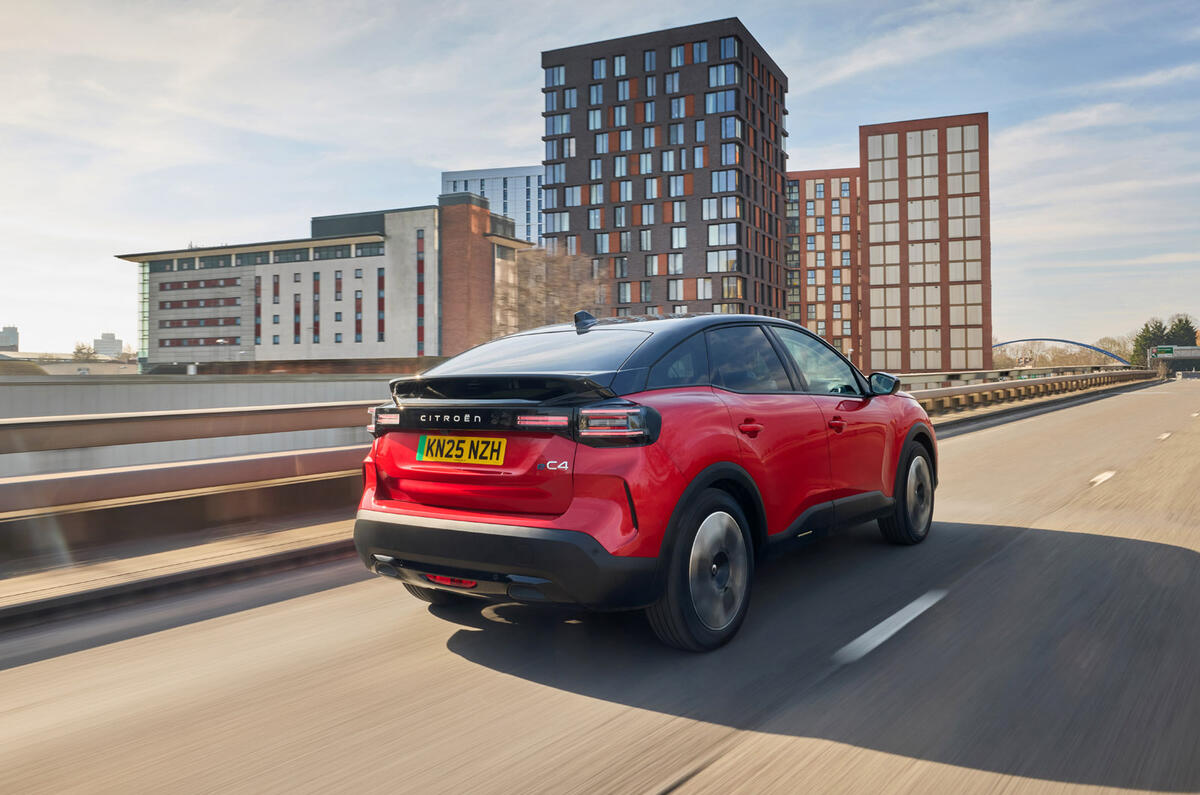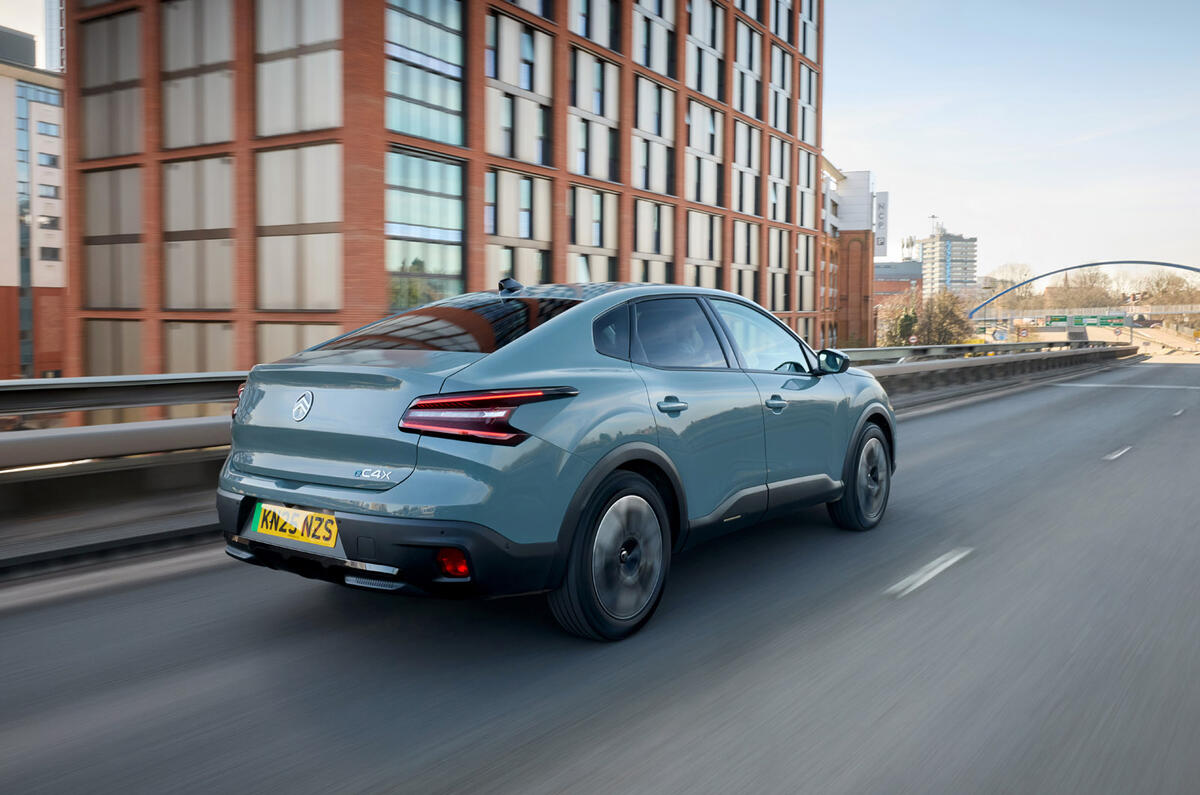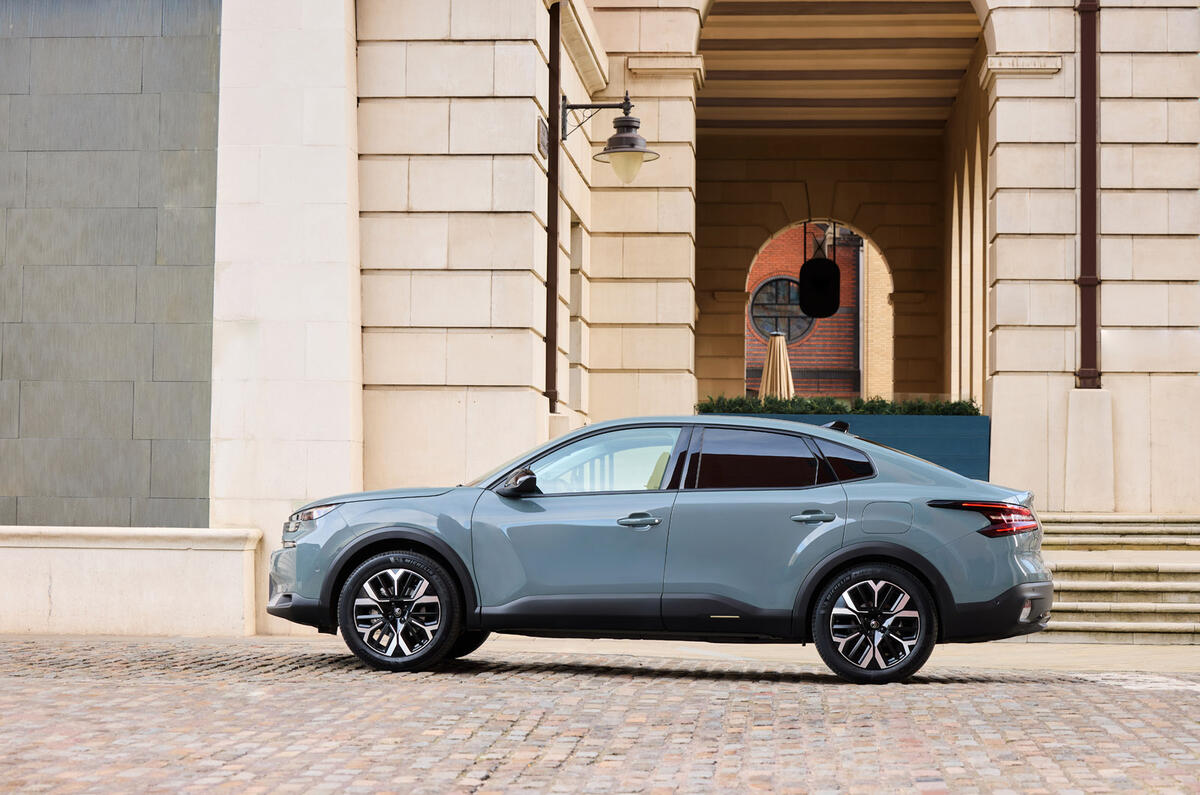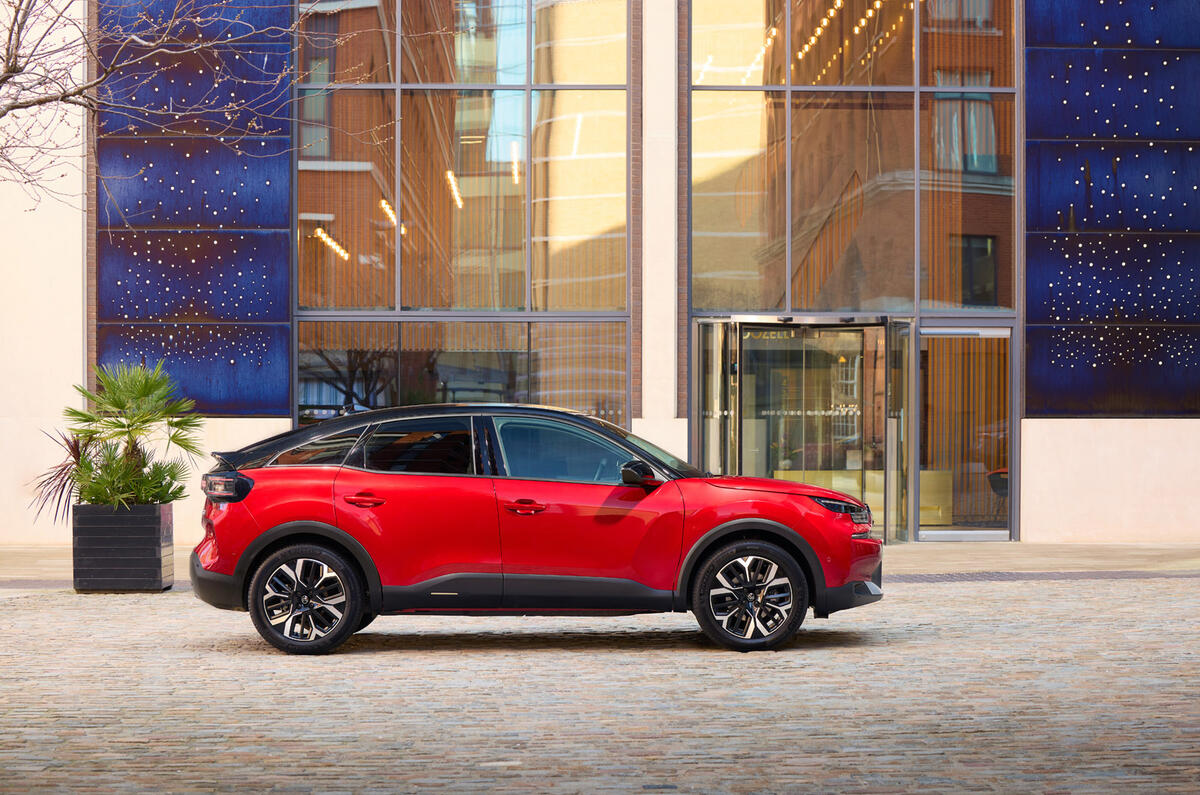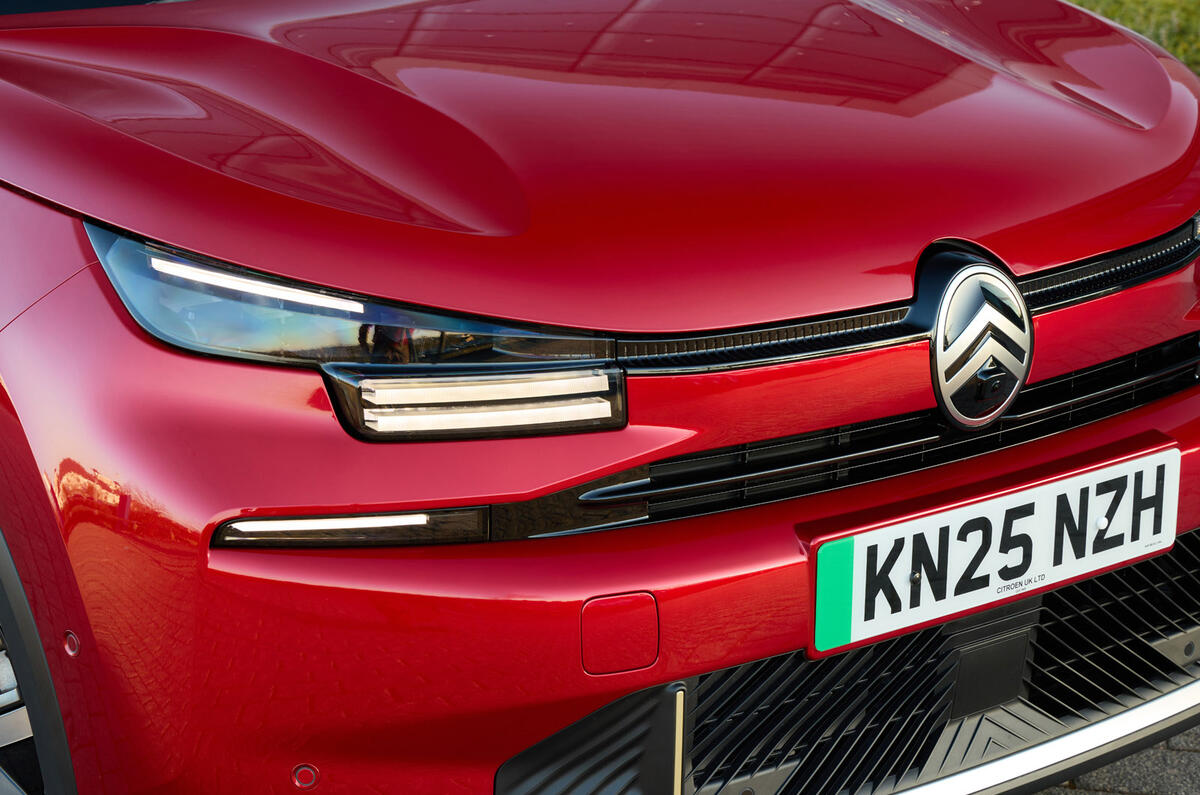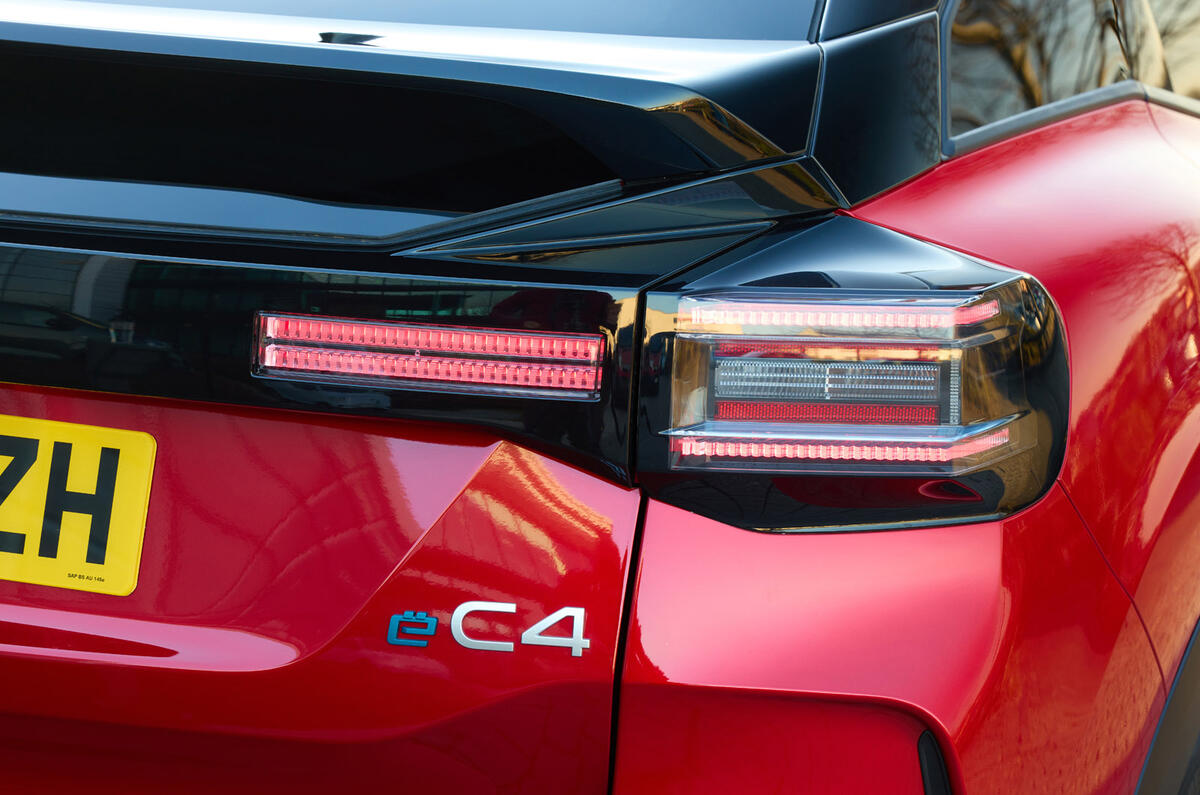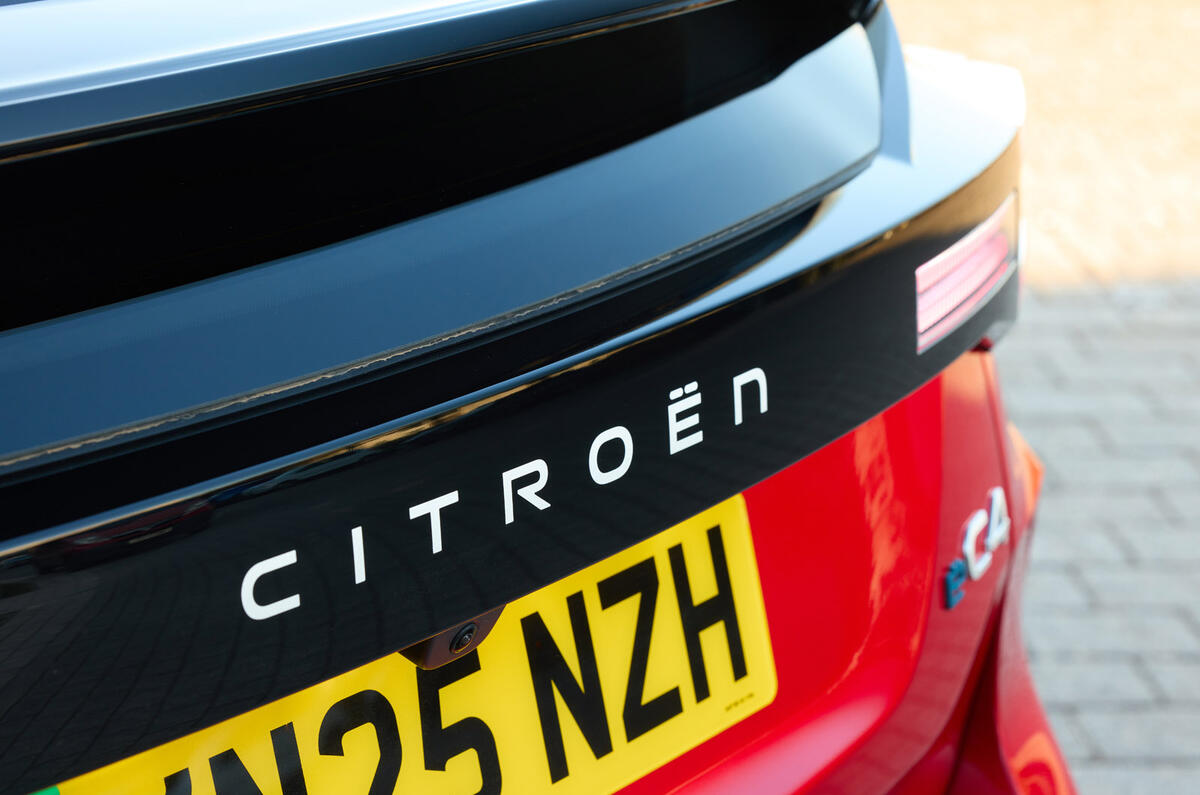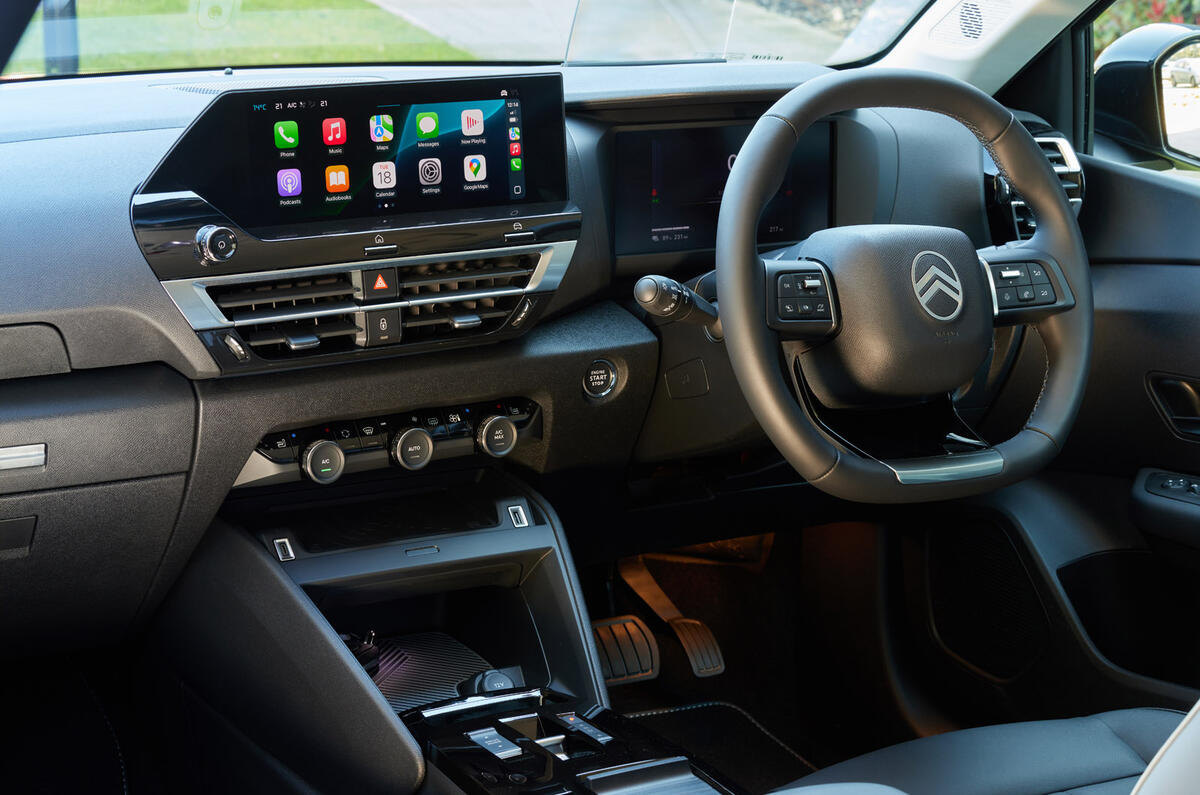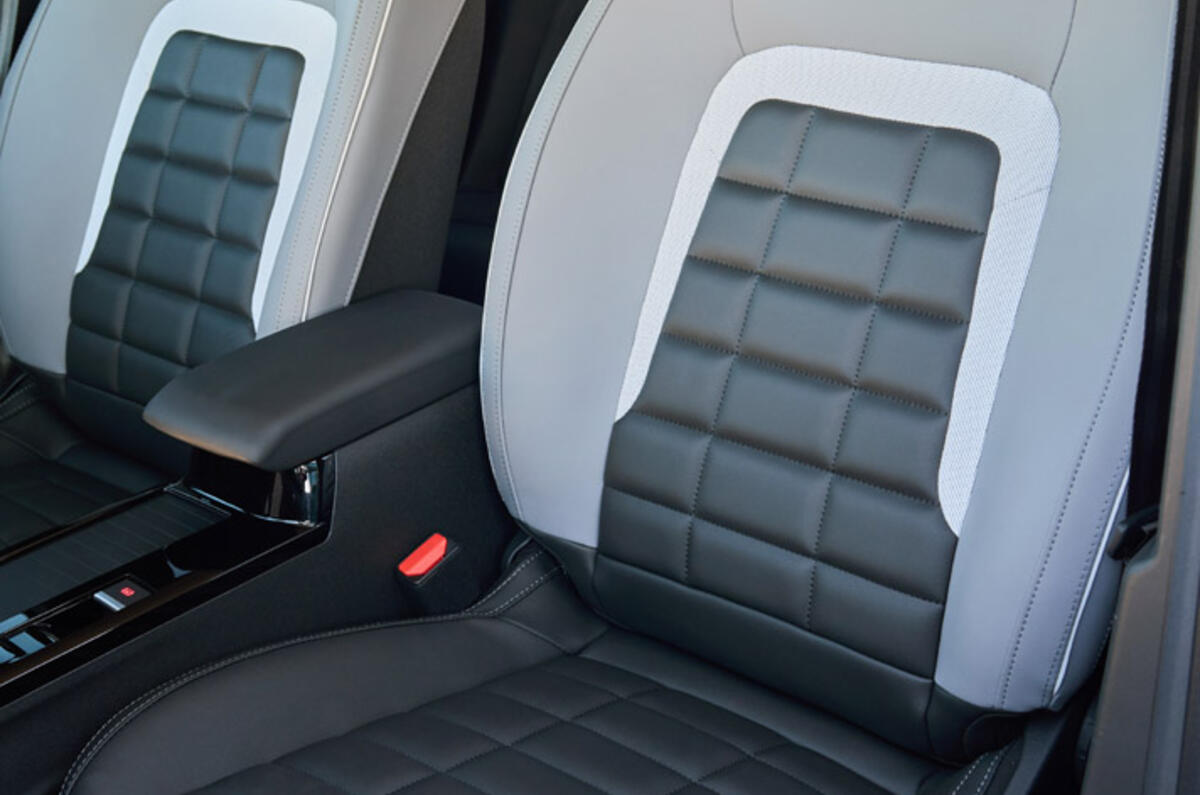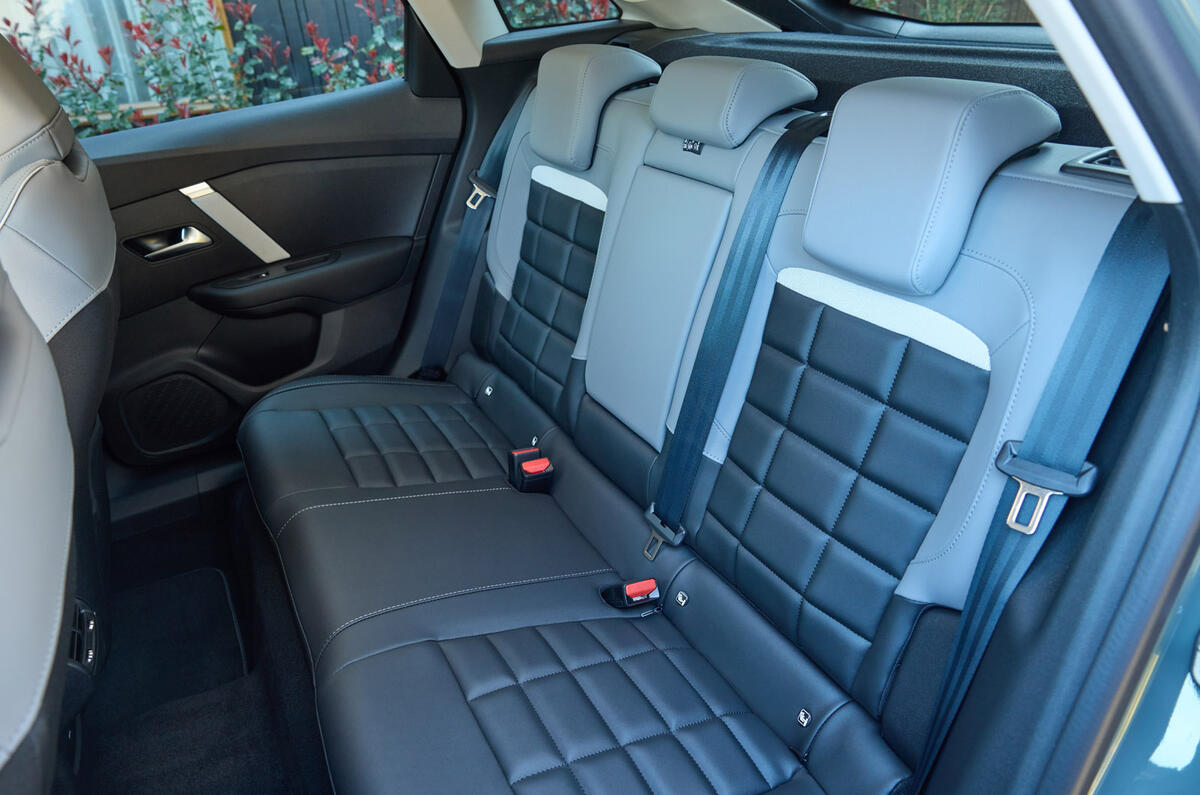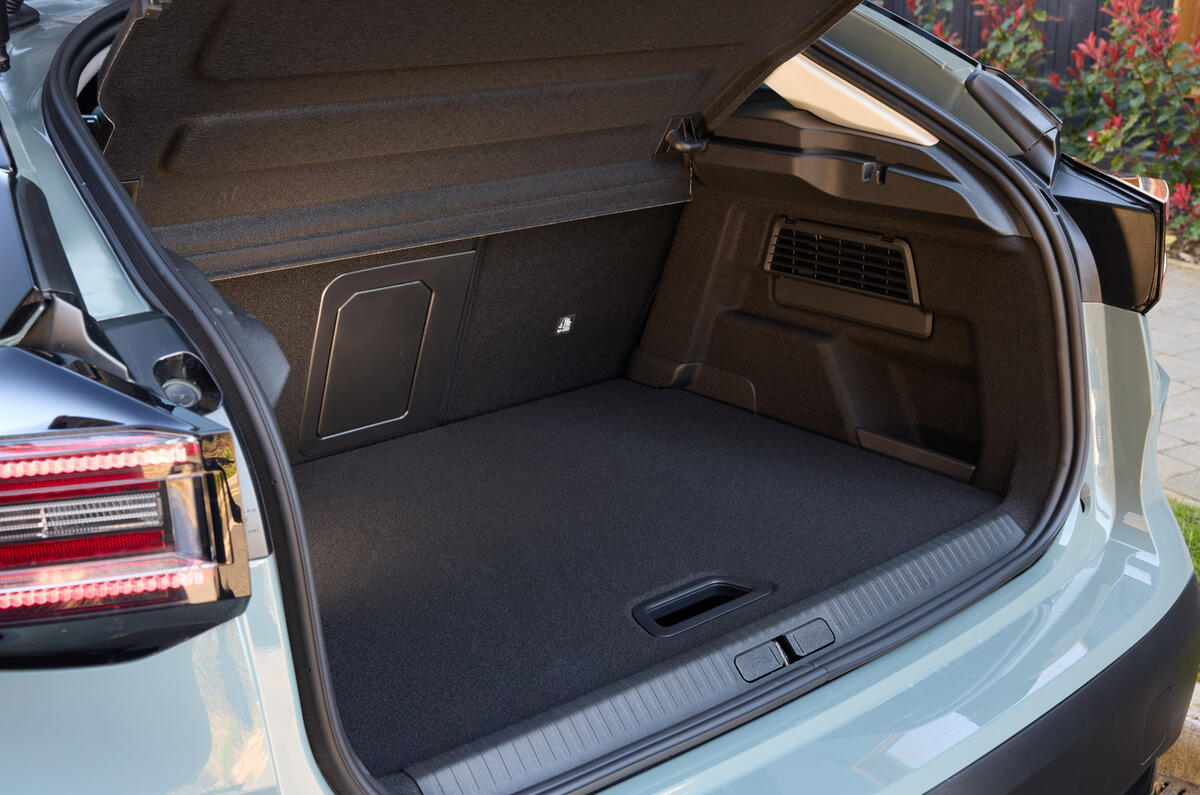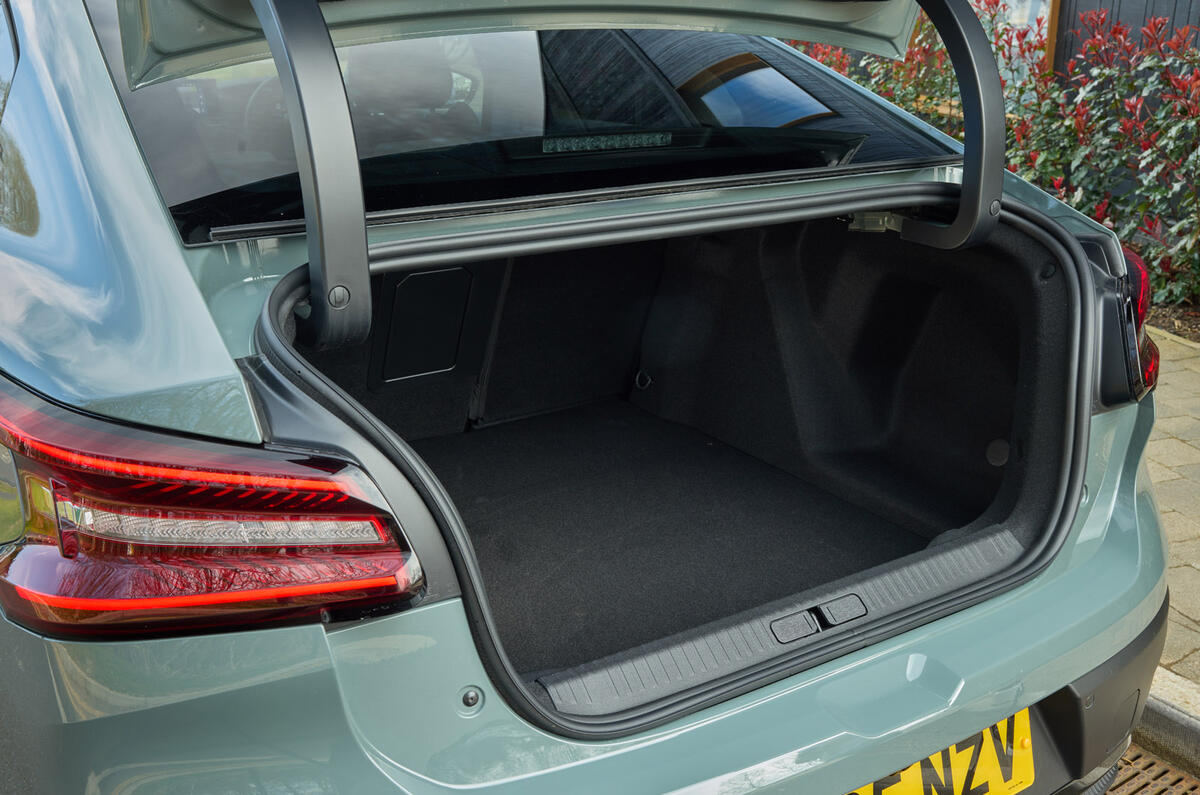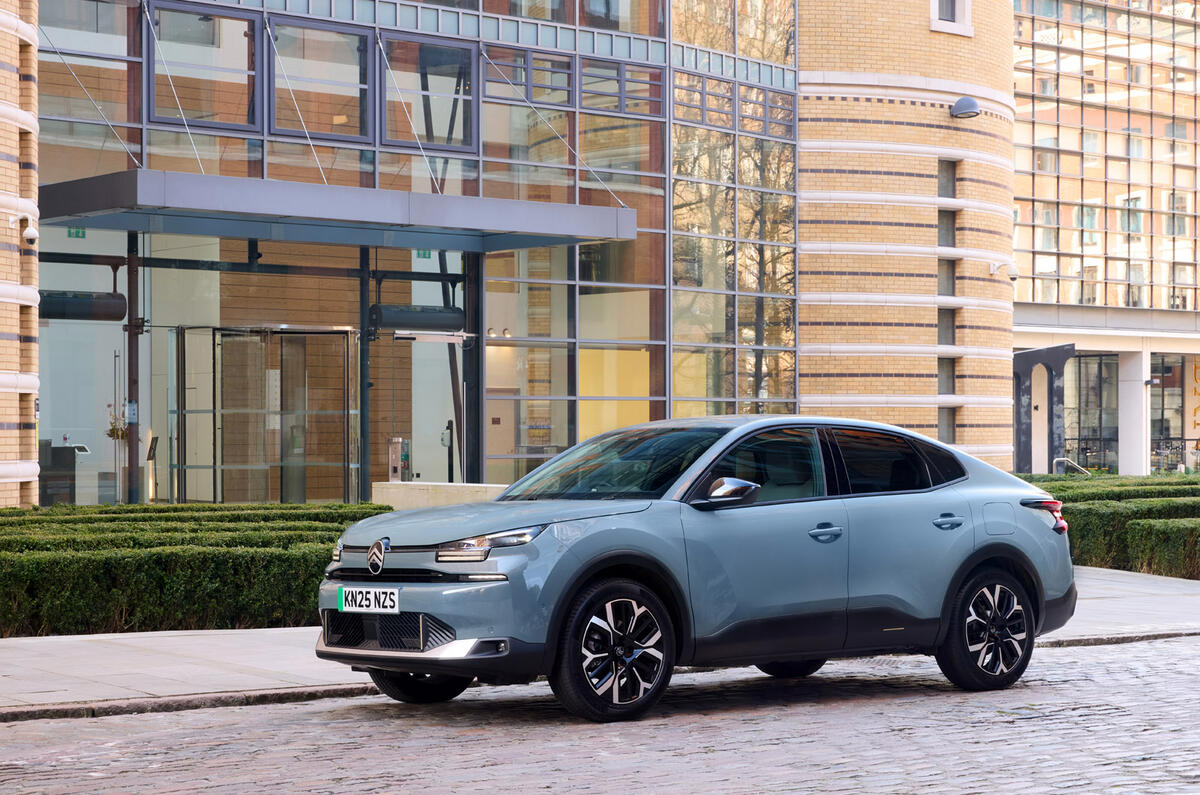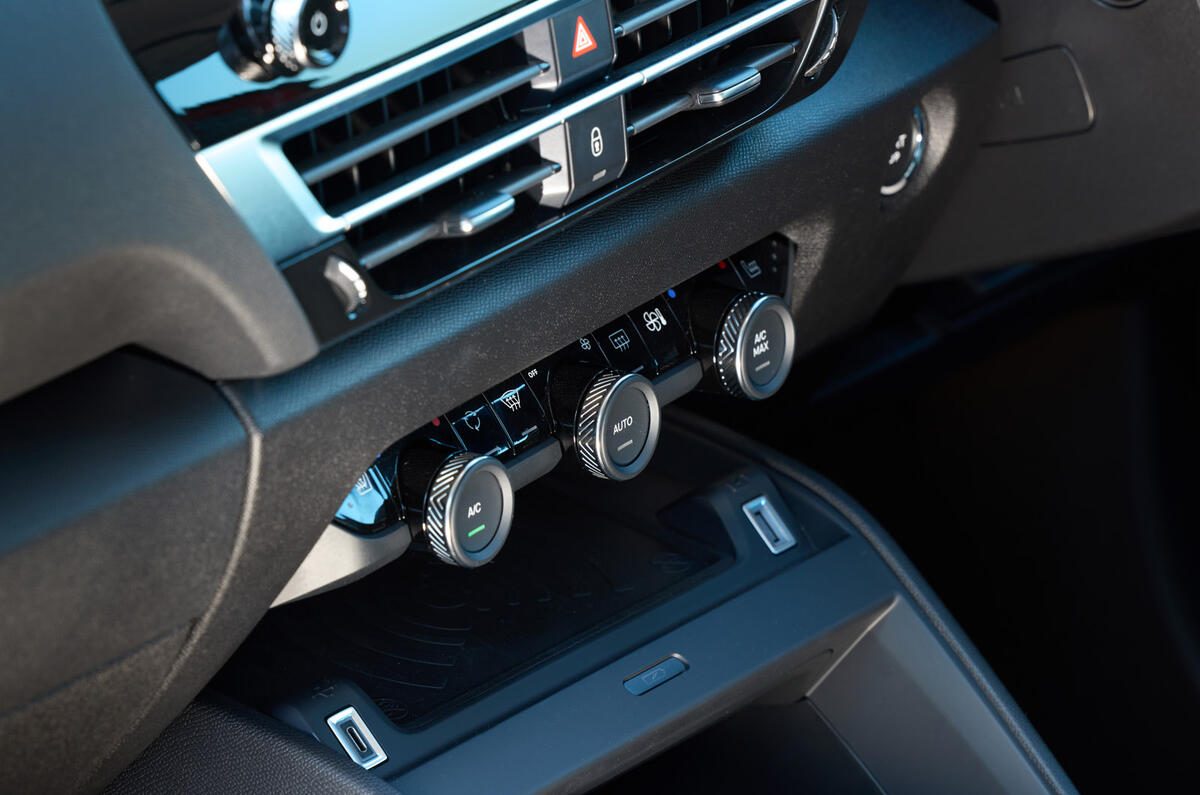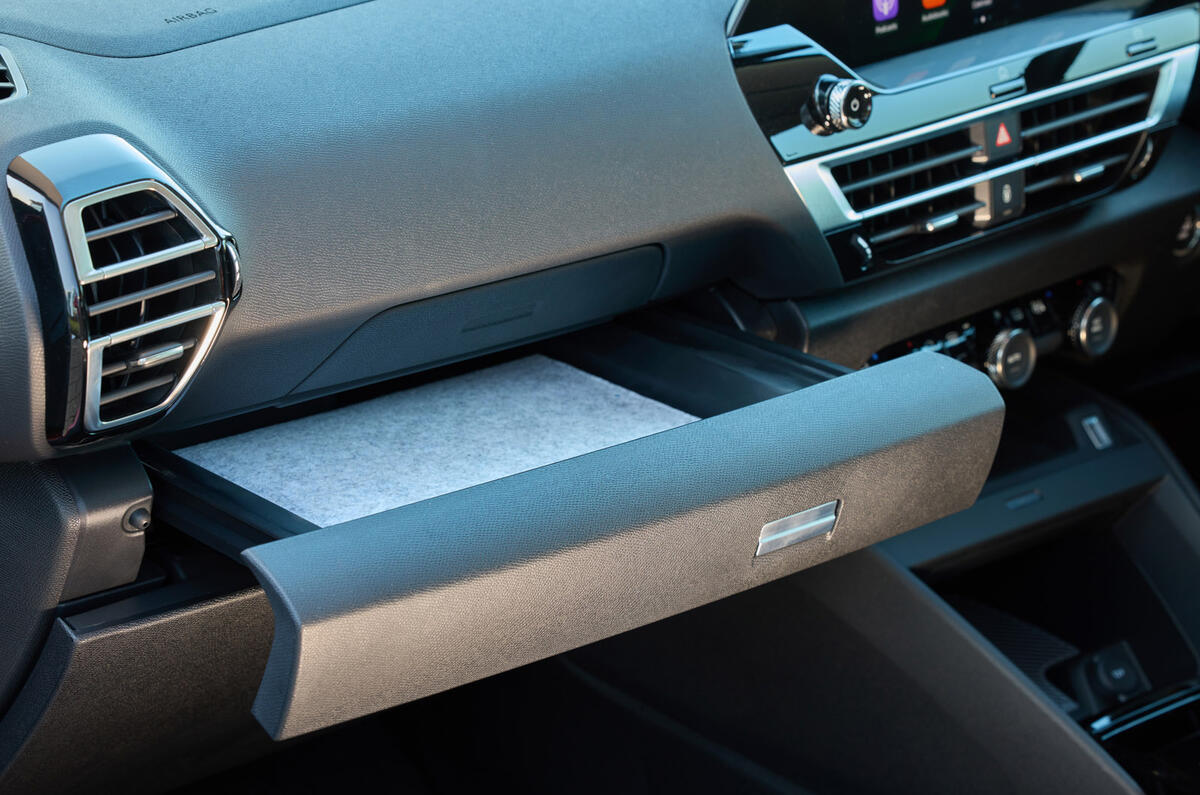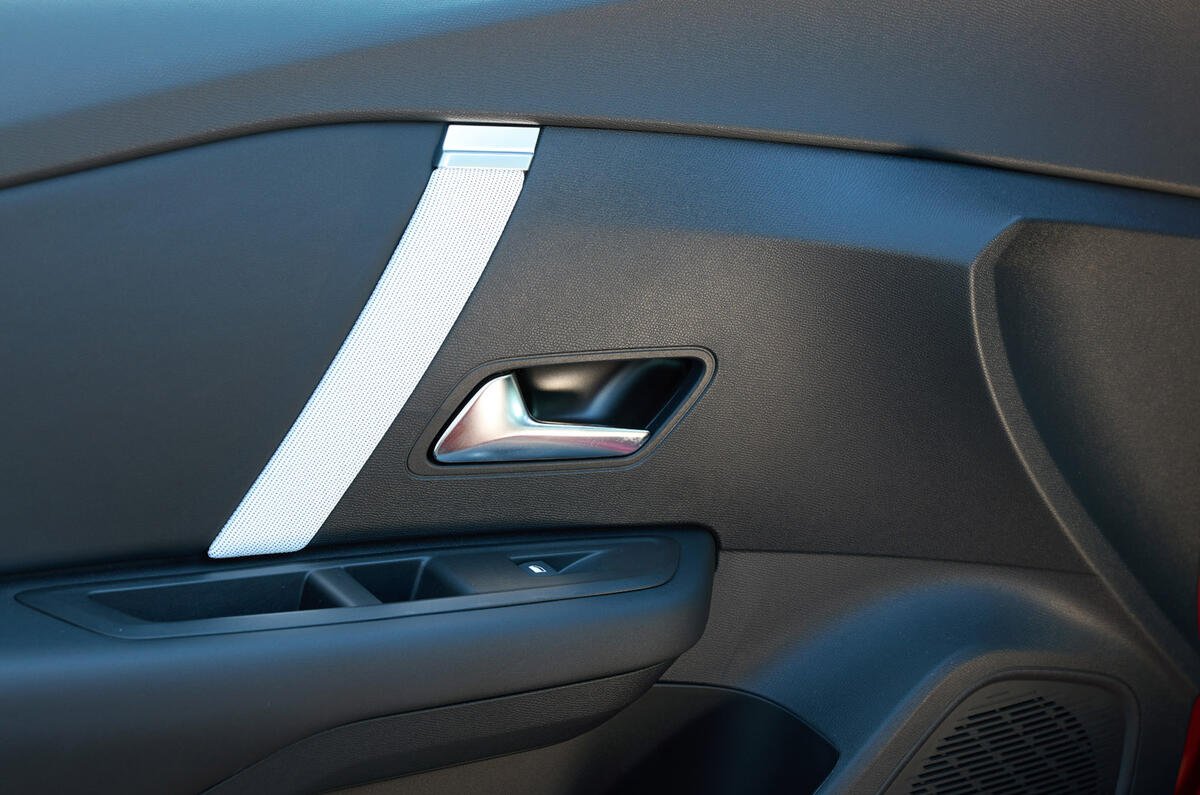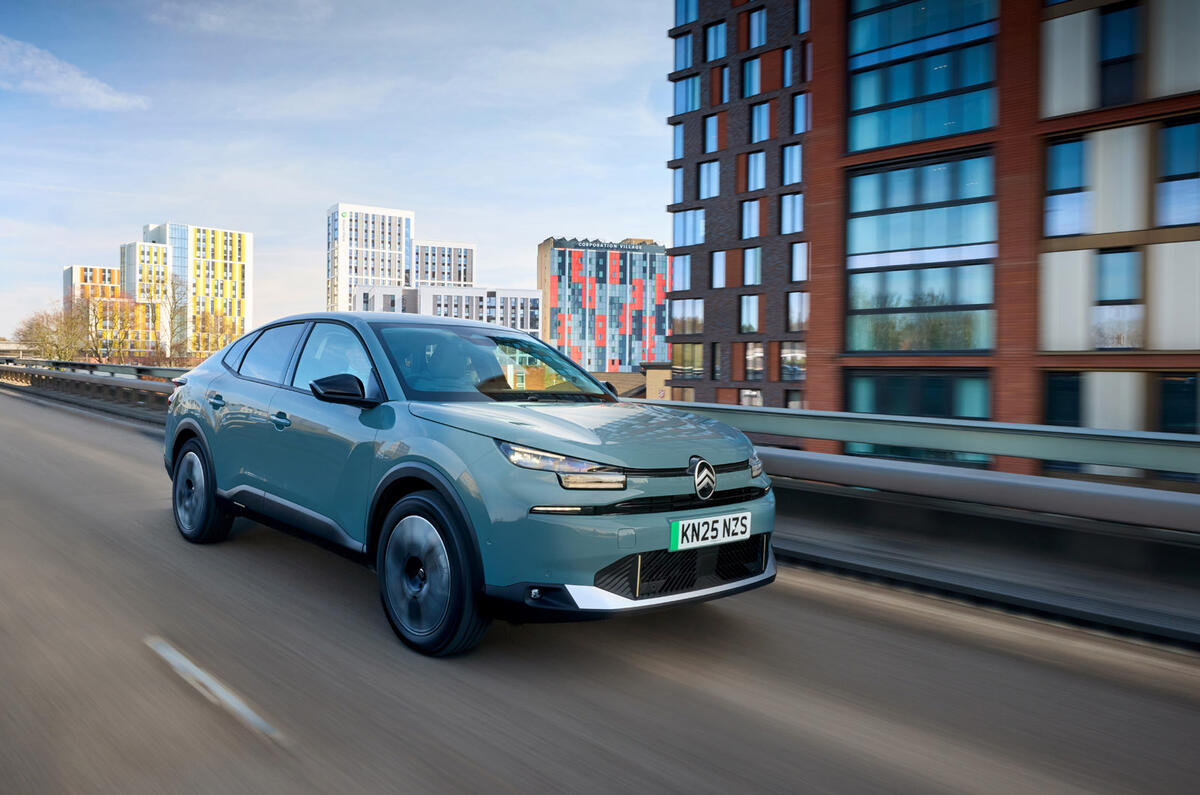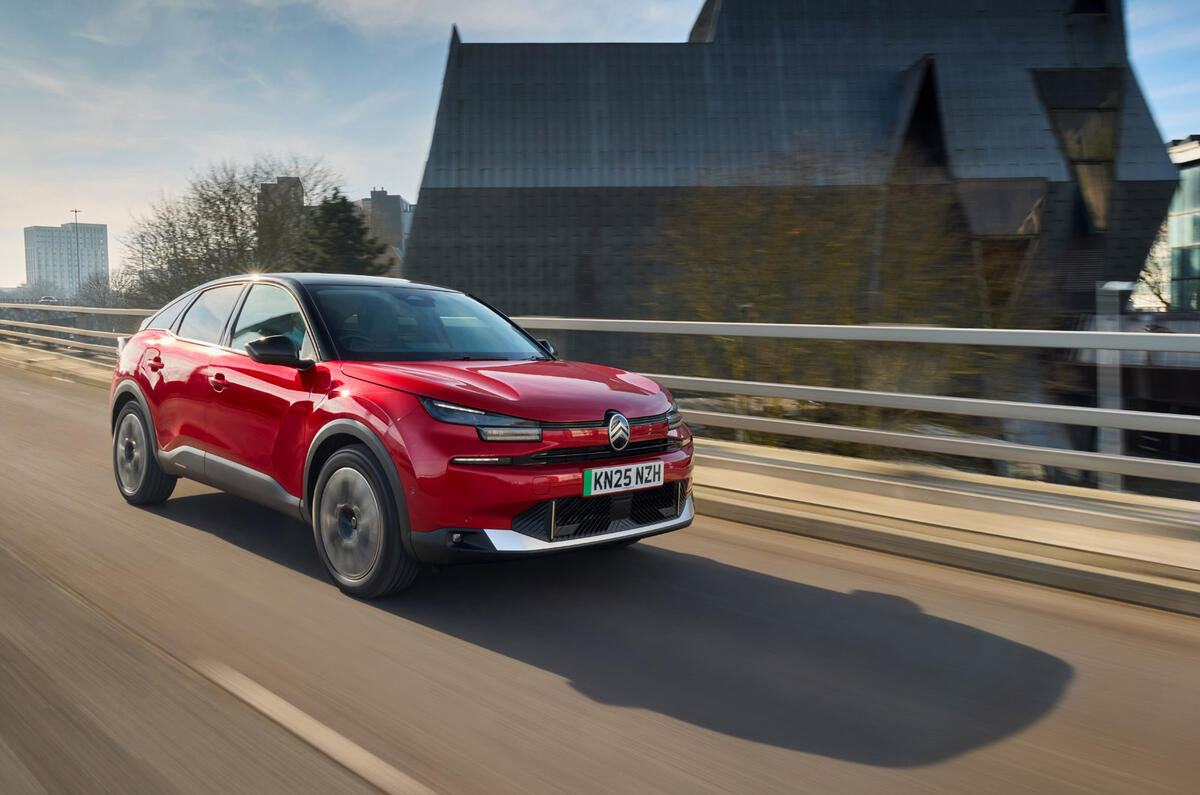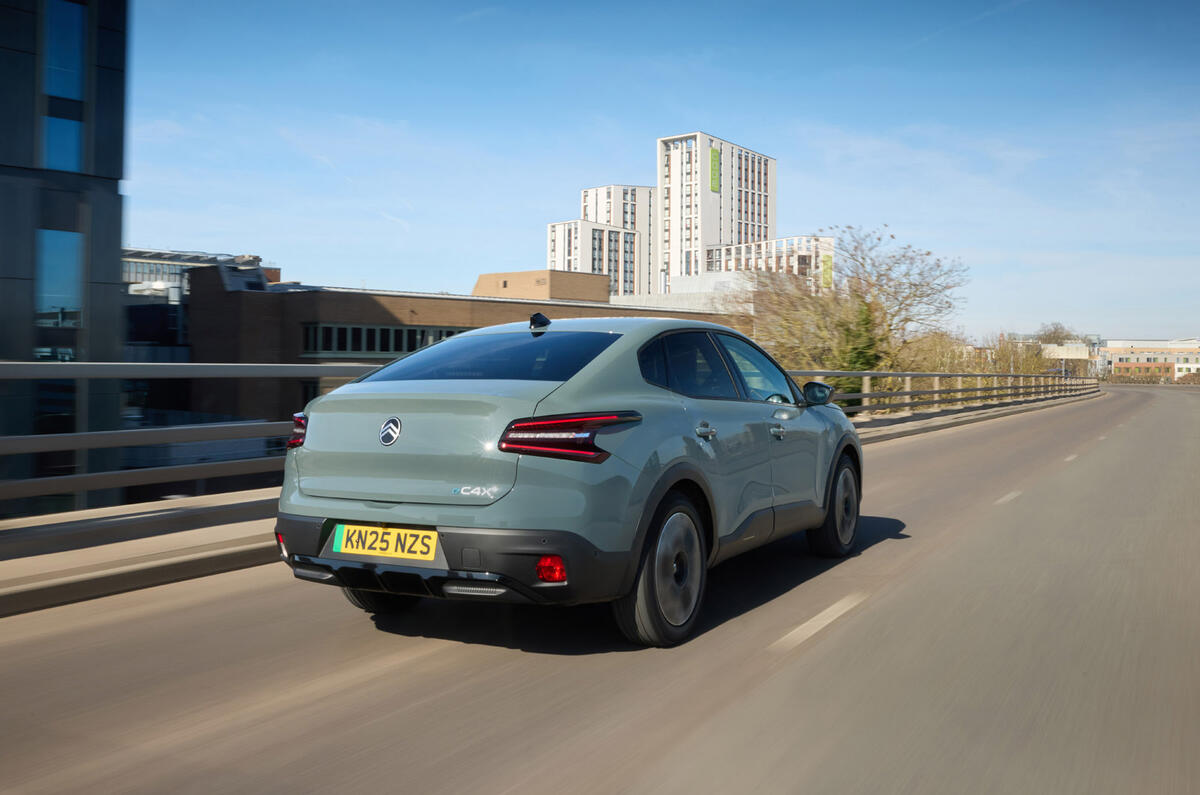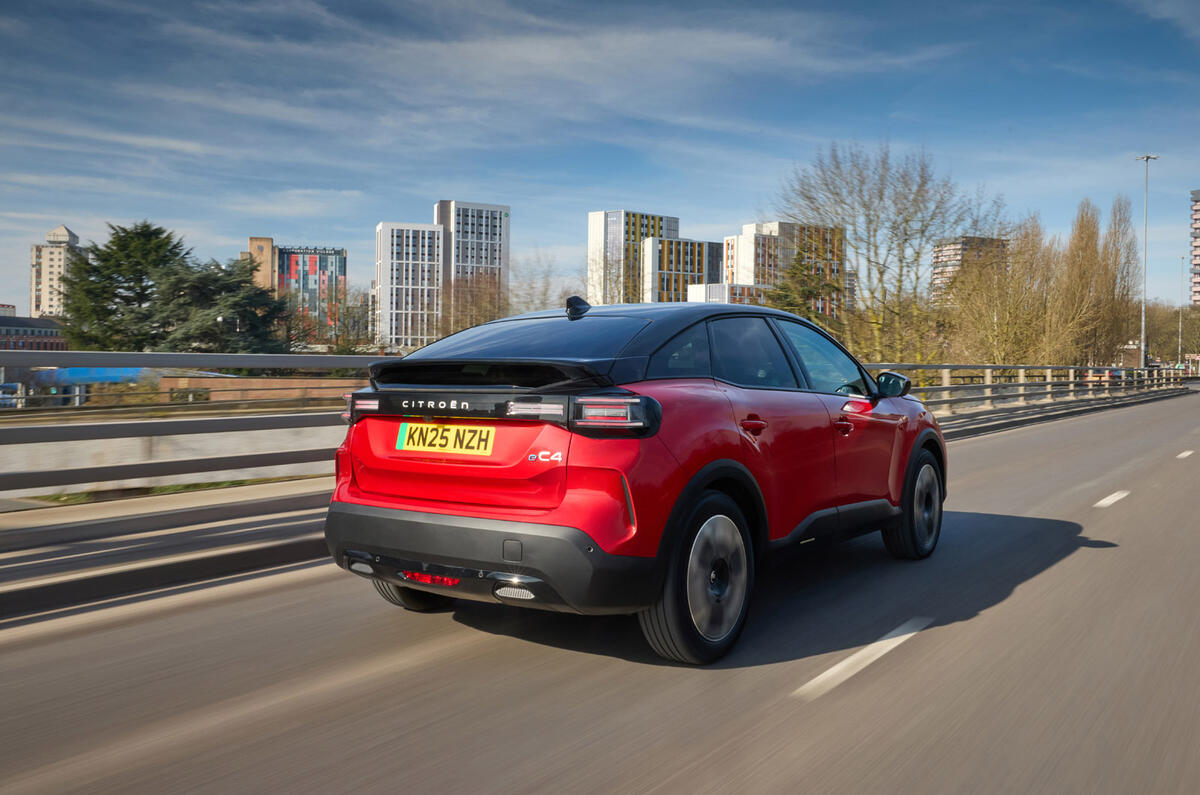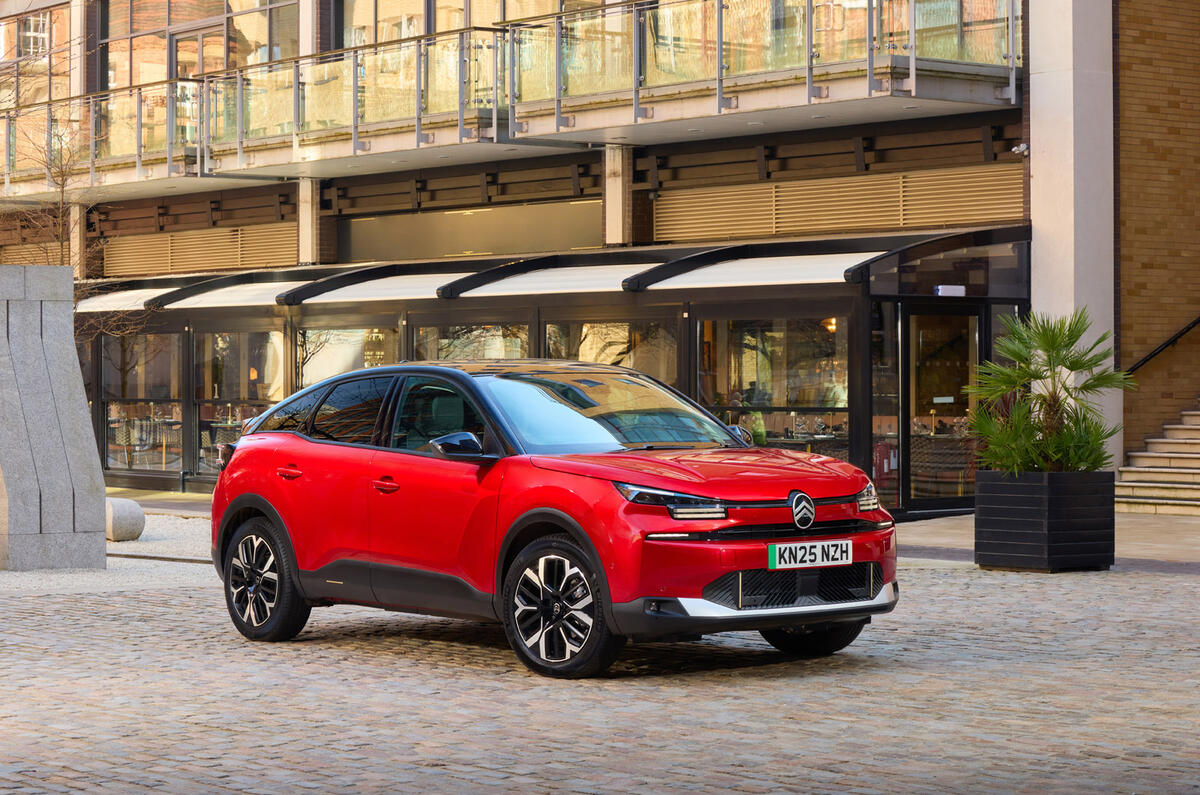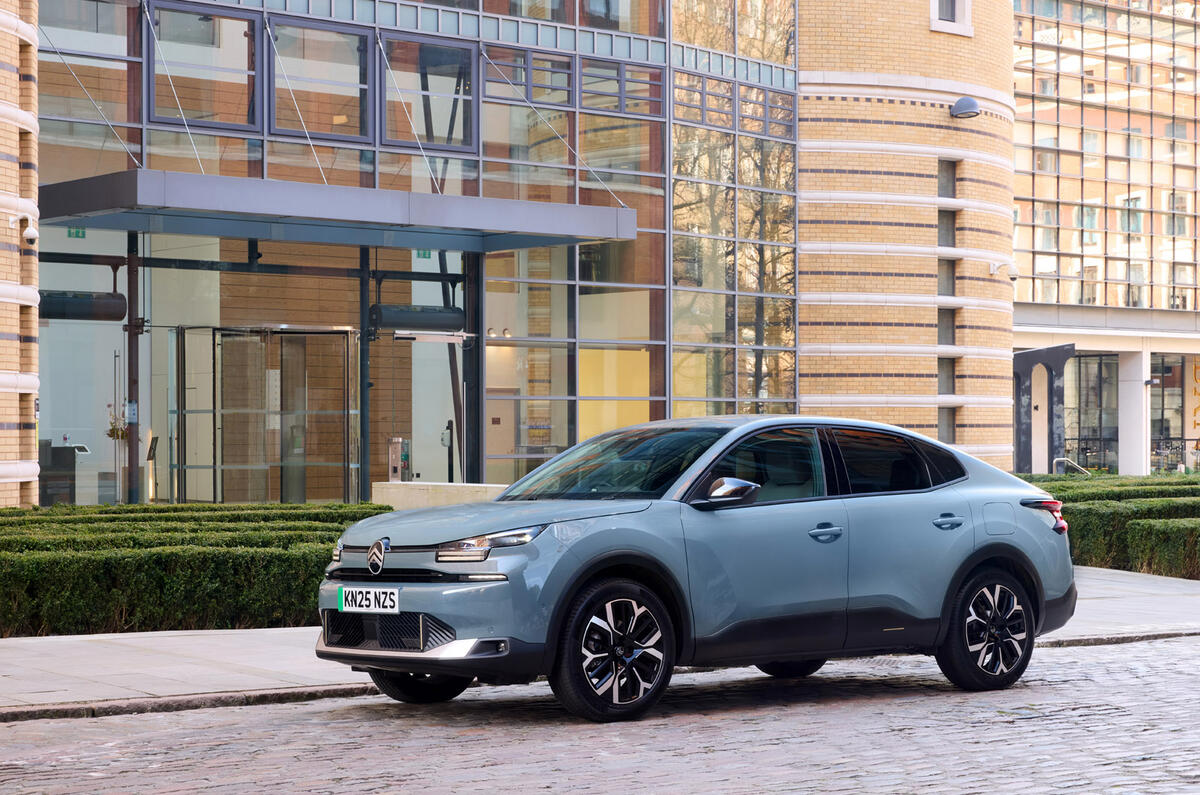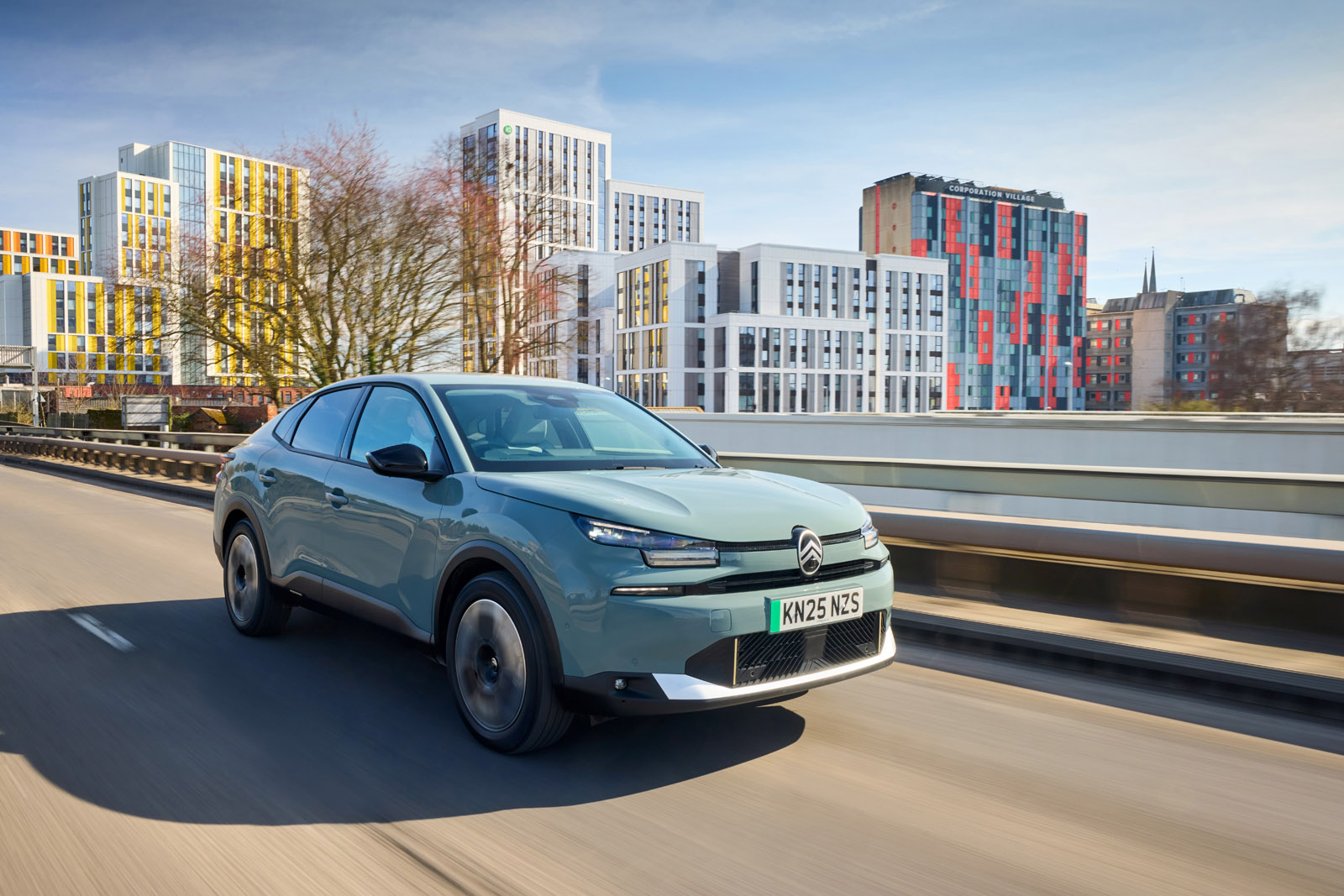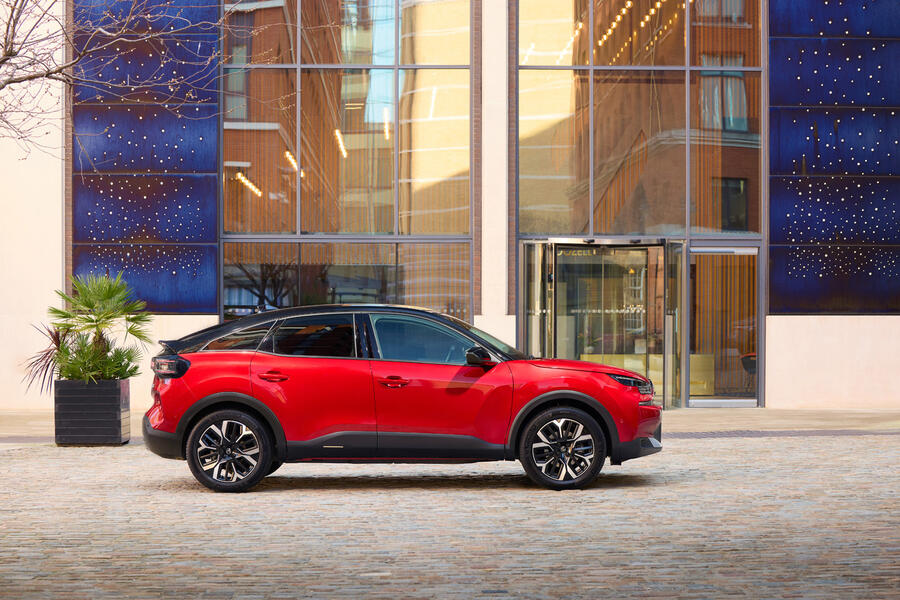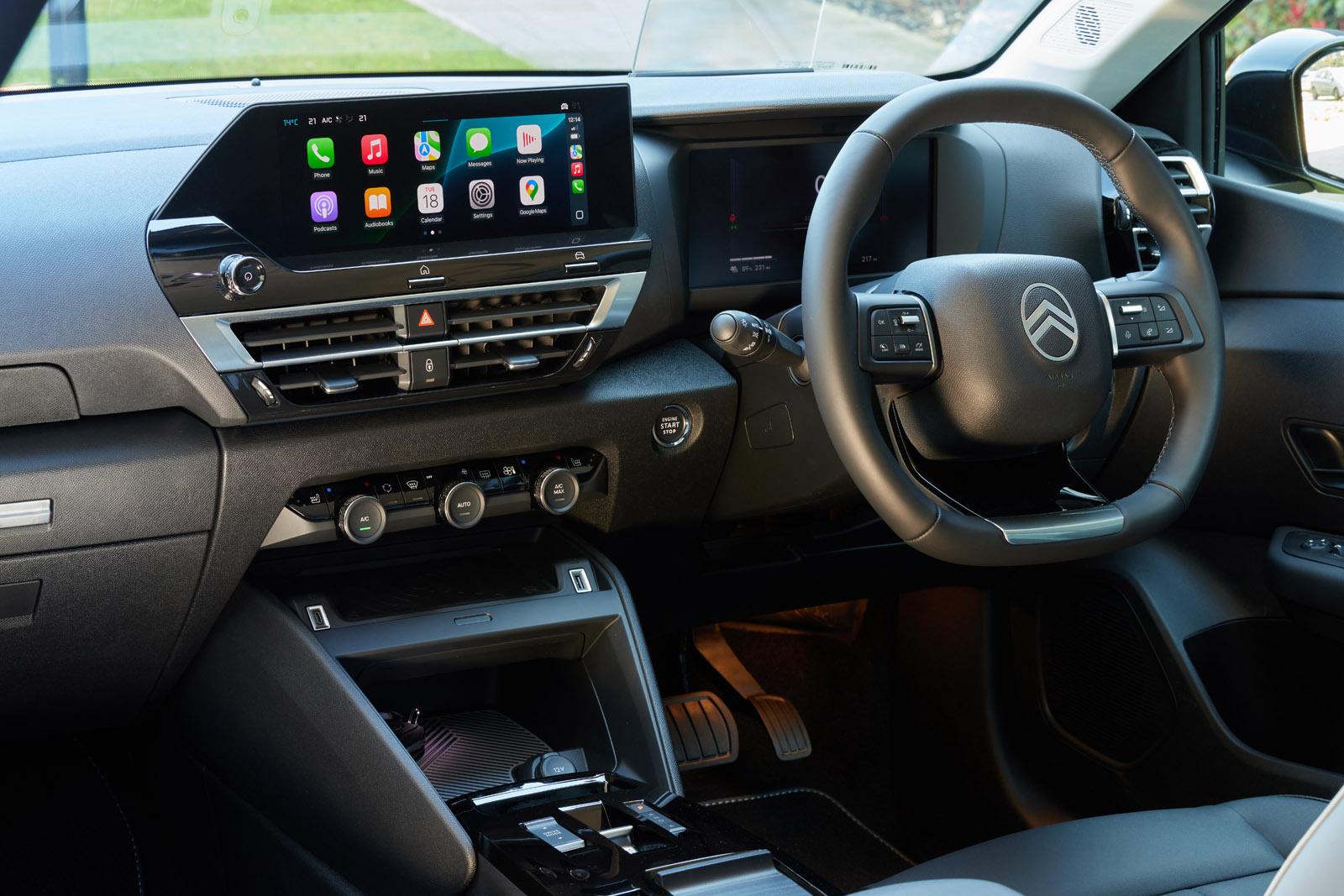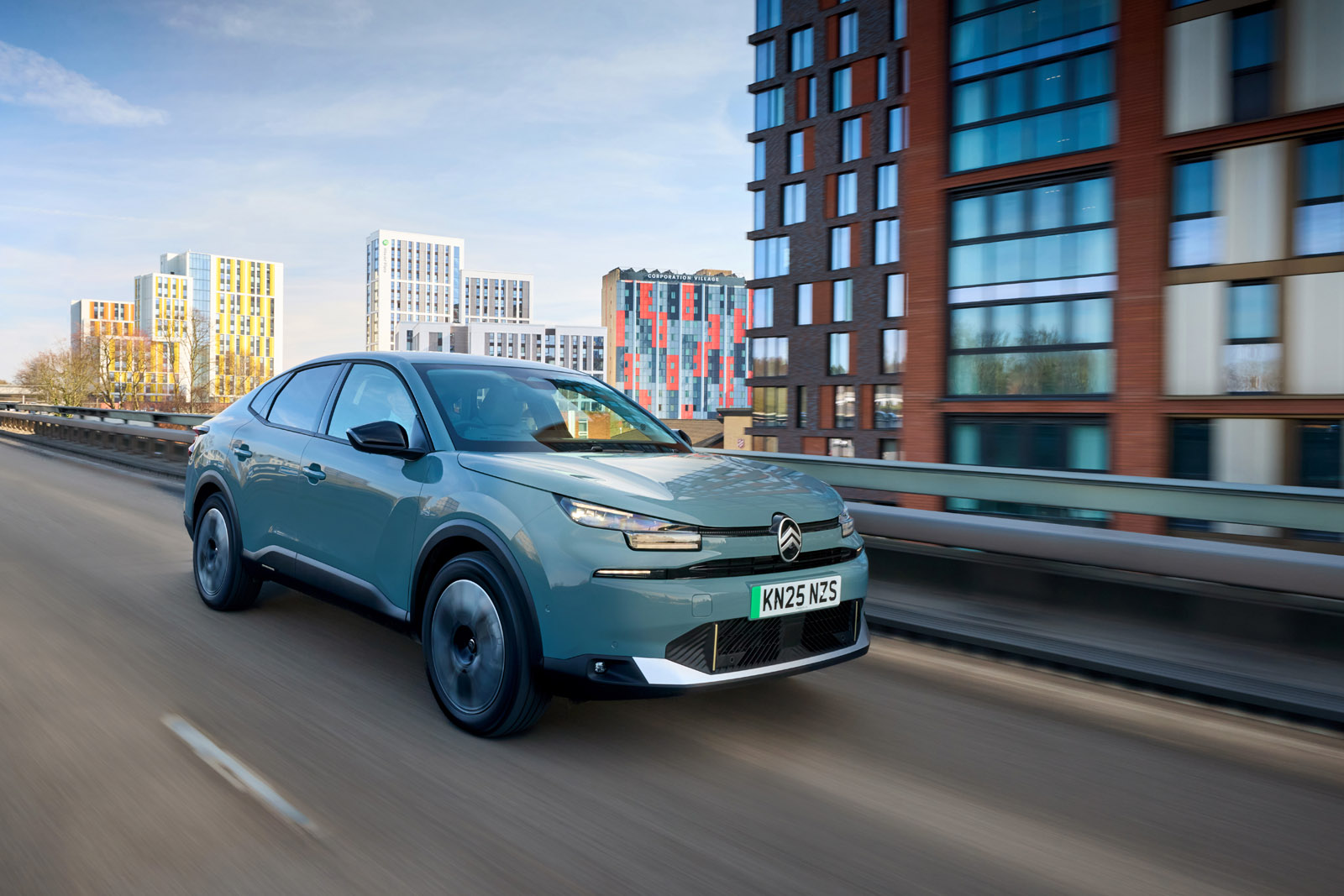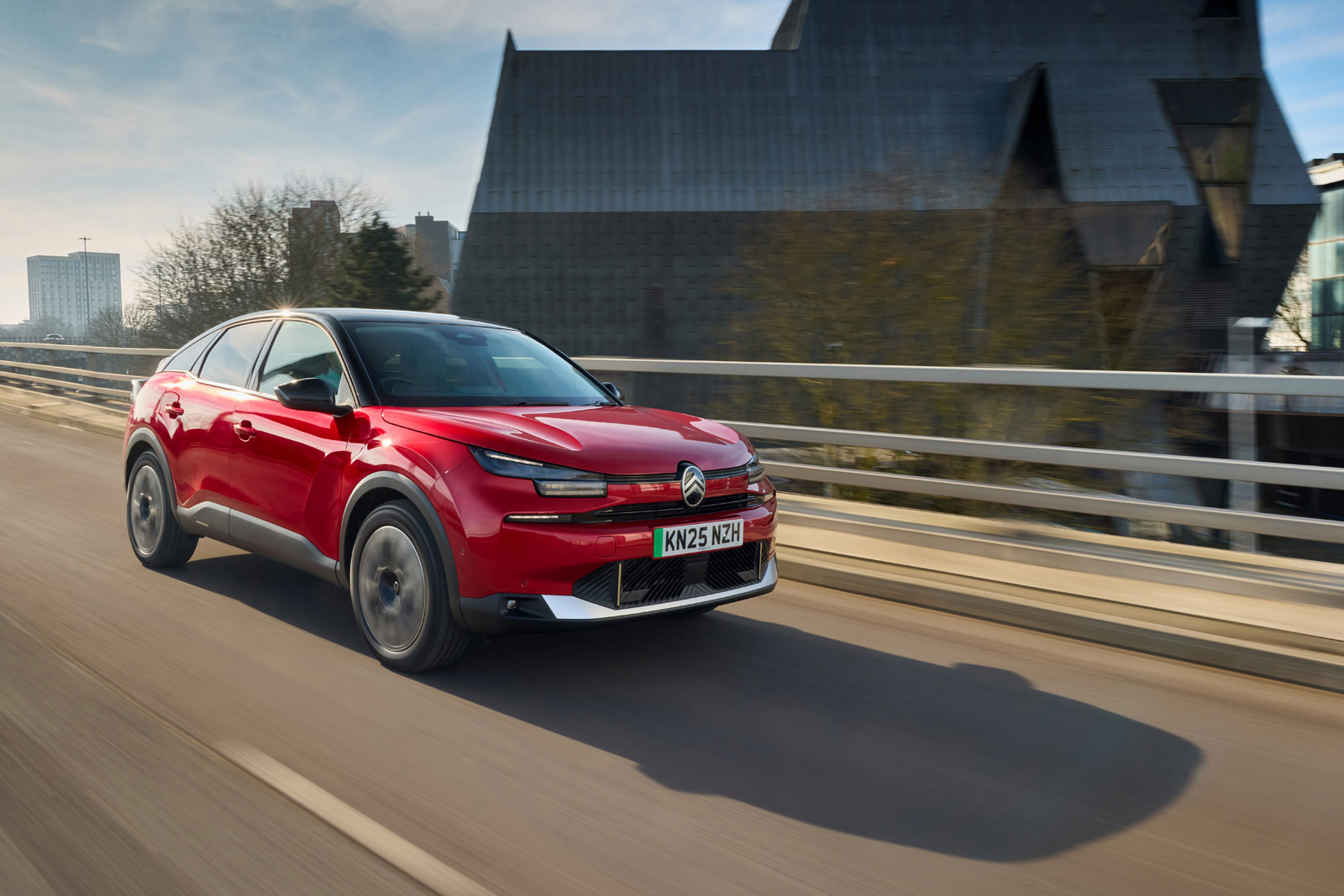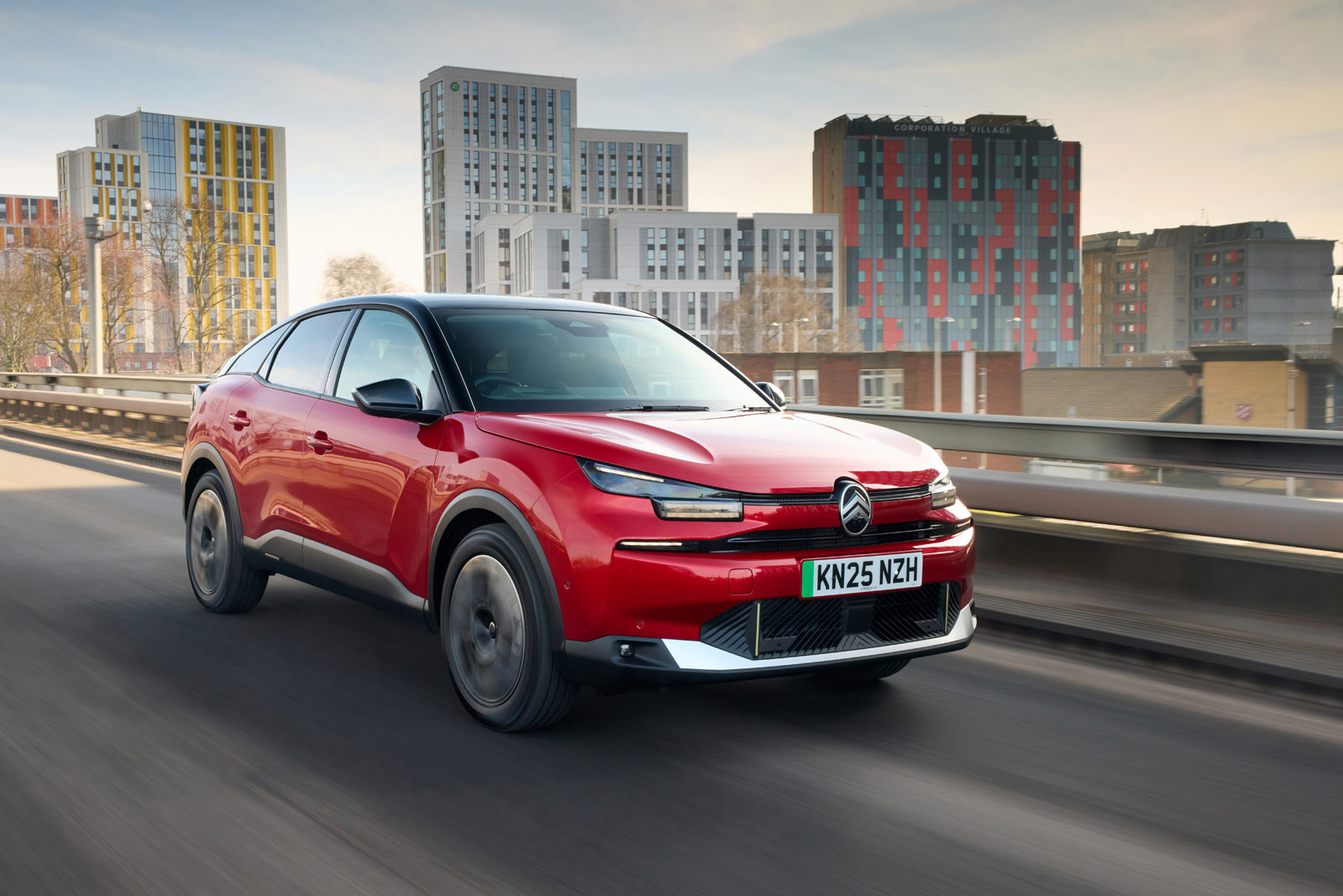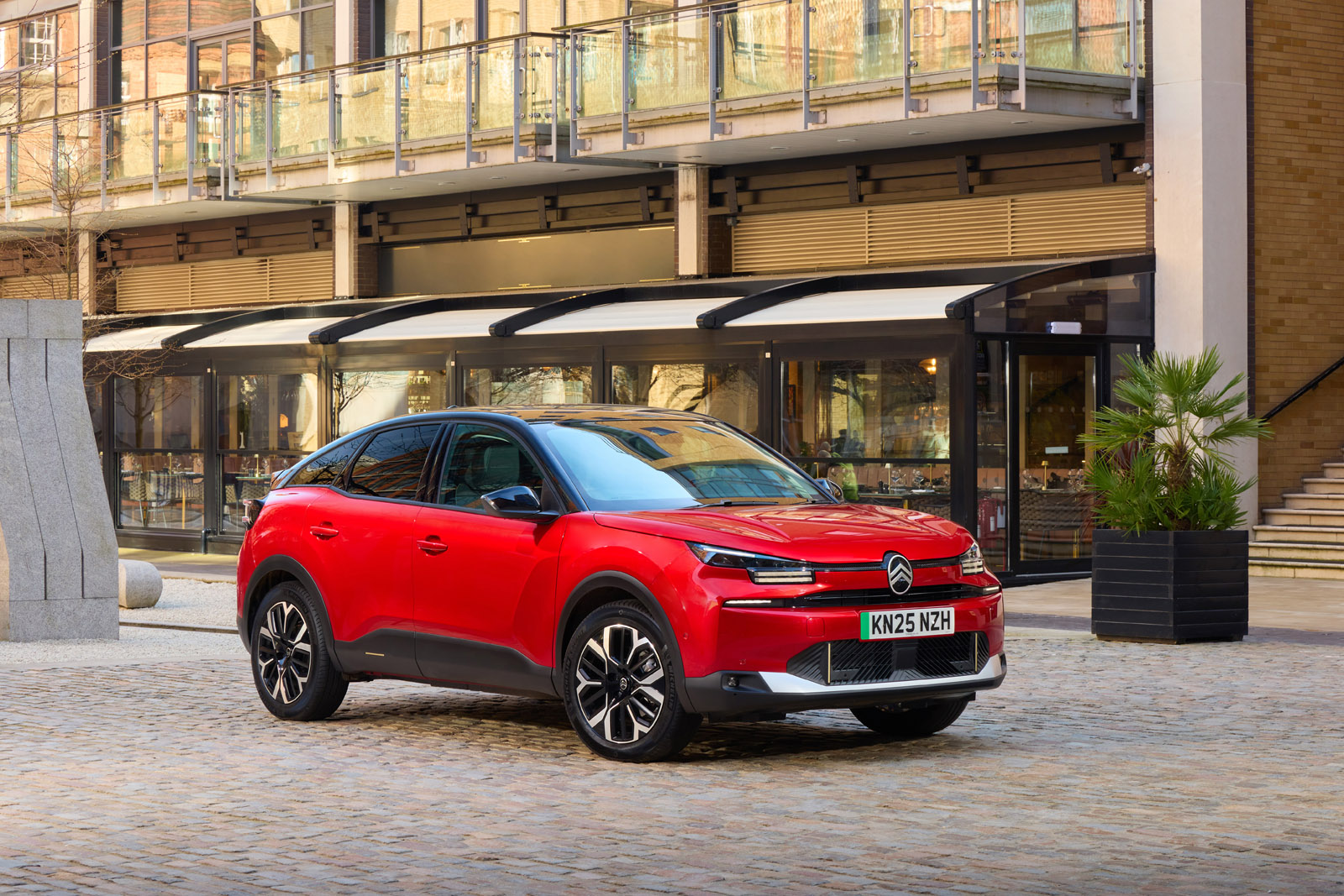The ë-C4’s spacious, boldly featured and imaginatively laid-out interior helps the ambience transcend the influence of some of the cabin’s cheaper-feeling materials. There’s a wide variety of materials and finishes, from traditional graining to modern technical graining and fabrics, including a bold sash down the door. Up front, there’s a very good amount of cabin storage, with various trays, bins and not one but two gloveboxes.
For the 2025 update, Citroën has played around with the colours and materials but hasn’t made any substantive changes to the design.
With their memory foam construction, the Advanced Comfort seats come with quite the billing. With the 2025 update, they’re supposedly even further improved, with 15mm-thicker foam.
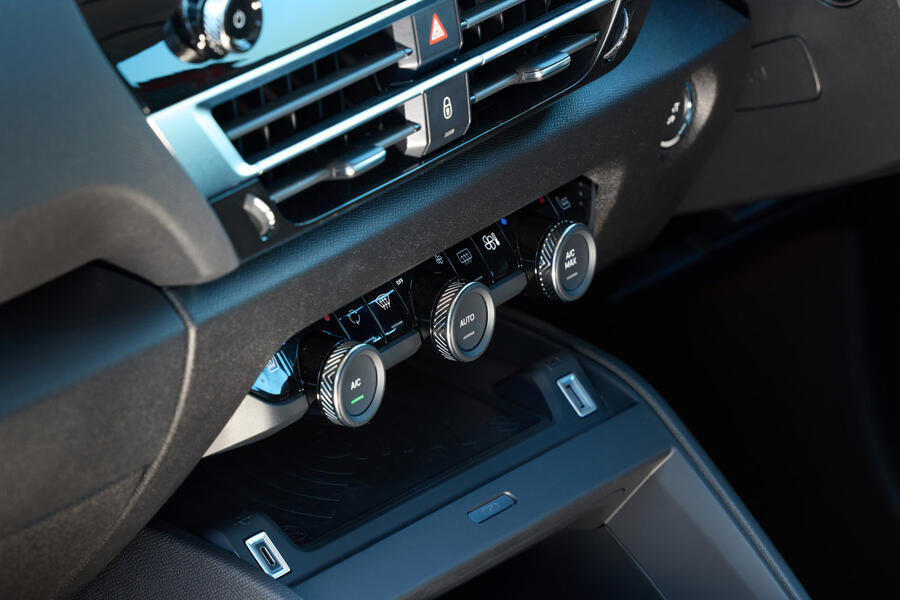
In practice, the seats and driving position are a little peculiar. The seat material is indeed very soft and gives the impression it might swallow the occupant whole, but we didn’t find them more supportive or comfortable than most other seats. Like other cars on this platform, the C4 has quite a long-arm, short-leg driving position that doesn’t suit everybody. The seats are angled in a way that lessens the effect, but does create a semi-recumbent driving position.
Rear passengers have more leg room than in electric superminis like the 5 and e-208 but less than in the 4 EV or EV3. They also benefit from a pair of air vents and a single USB port.
At 380 litres, the boot occupies a similar territory relative to rivals. The ë-C4 X expands that to 510 litres, although it's accessed via a notchback-style bootlid rather than a hatch. It’s a shallower space than the C4 hatchback offers but still quite long and wide and well able to swallow bigger suitcases and storage boxes, although it’s a little sparsely provisioned. (There are no power sockets or retention nets.)
Infotainment
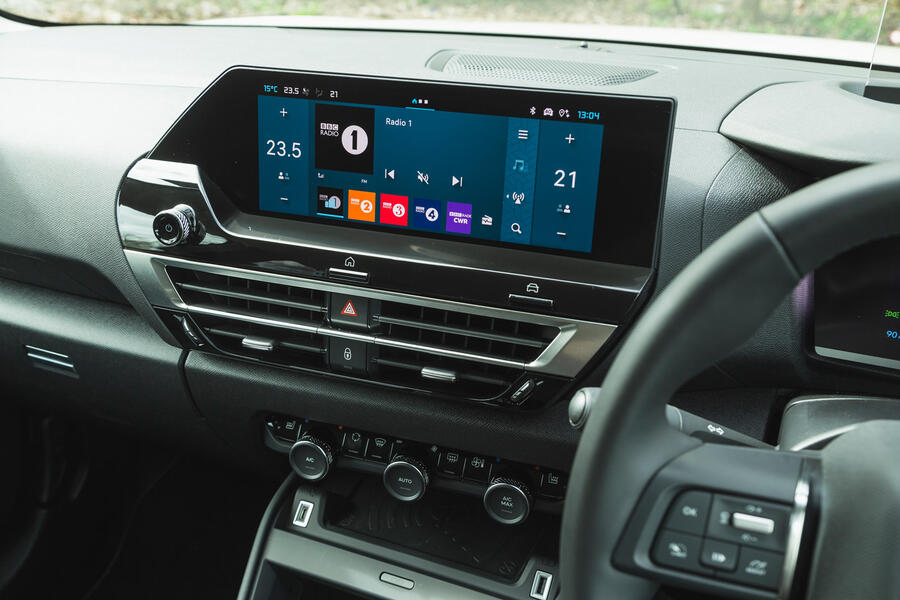
All versions of the car get a 10.0in touchscreen infotainment system and a digital instrument cluster (5.5in originally and on You trim, 7.0in from 2025). Both are fairly clear, and you can customise them to show what you find useful.
Apple CarPlay and Android Auto are both wireless and well-integrated. Voice control works consistently well when you're entering sat-nav destinations, and the system plots routes intelligently and with good live traffic information.
Unlike on Peugeot models with effectively the same interface, the ë-C4’s screens aren’t cluttered with climate controls, since there are separate physical buttons and dials for these.
This shared Stellantis interface is never the zippiest, but the touchscreen on our 2025 test car was particularly laggy and unresponsive – some of the worst we’ve found recently. This wasn't the case on earlier test cars, so it may have been a glitch on that particular car.




